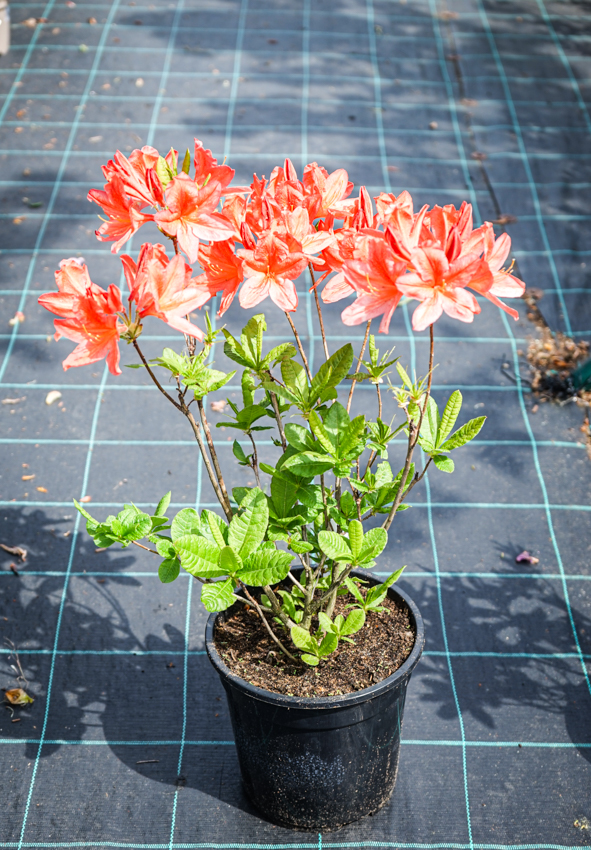Azalea 'SPEK'S ORANGE' deciduous azalea
Azalea
Deciduous azaleas are among the most beautiful and reliable spring shrubs. Their colours are vibrant, often very intense, and they offer exactly the shades that many rhododendrons cannot. They require a sunny location. A small series of cultivars named Spek (Spek’s Brilliant, Spek’s Orange, and Spek’s Pink) were bred at the Jan Spek nursery in Boskoop before 1948. The nursery was founded in 1890 by Jan Spek as an ornamental horticulture enterprise, and only in the early 20th century it turned towards roses and eventually became one of the leading rose breeders and specialists in Europe. With these rhododendrons, Jan Spek may have simply brightened up his rose-paved life. 😊
Spek’s Orange is a large-flowered deciduous azalea introduced in 1958. From early May, it blooms with single flowers up to 6 cm wide in an attractive shade blending subtle, pastel orange and salmon pink, with a golden glow in the throat. It carries a moderately strong, sweet, and very pleasant fragrance. It grows upright into a well-branched shrub, reaching about two meters in full maturity and slightly less in width. The leaves are fresh green, deciduous, oval, pointed, and in autumn they turn red, orange, and yellow.
Deciduous azaleas are heathland plants that, unlike Japanese azaleas, thrive in full sun as long as they are provided with consistently moist, acidic soil. They tolerate occasional drying in summer, but their leaves will be weaker and more susceptible to fungal diseases. If spots appear on the leaves, or the foliage begins to curl unnaturally or lose colour, apply a suitable fungicide immediately. Usually, one or two treatments are sufficient to keep the plant beautiful and healthy until leaf drop. During flowering, also check the emerging leaves, as they are often eaten by slender caterpillars that are almost invisible due to their identical green colouration.
Azaleas are not commonly pruned. If you need to shape or rejuvenate the shrub, do so as early in spring as possible to allow new shoots to develop, with flower buds forming at their tips for the following year. They regrow reliably. They have a dense network of shallow roots through which they absorb moisture and nutrients. When planting, provide them with light, well-draining soil enriched with peat, lime-free compost, and leaf mold. They are fully hardy down to about -34°C (USDA zone 4).
Last update 08-05-2025
Goods are shipped all over Europe. For Russia and U.K. and for further details please read about SHIPPING OPTIONS HERE.
Are you interested in a serious discount for orders NOV-FEB? Check your options here.
THE PRICES INCLUDE VAT of 15%. For quick conversion you can use 1 CZK = approx. 0.04 EUR
- STANDARD QUALITY - Plants of this group are 1st class quality with number of branches and overall density adequate to their size and age, considering they were container grown.
- DE LUXE QUALITY - This label guarantees a luxurious quality of manually selected plants that, compared to their height and age, are exceptionally dense and beautiful.
- EXTRA - These plants are usually mature and bigger specimens with exceptional overall appearance.
- STANDARD (as described in the plant form) means a tree with a trunk of 190-210 cm and a crown at the top, unless specified differently. The commercial size for trees is their girth measured in the height of 1m from ground.
- HOBBY - These plants are of the same quality as our standard-quality plants but younger and therefore cheaper.
- SHRUB - a woody plant with branches growing bushy from the ground level.
- HALF-STANDARD or MINI-STANDARD - a small tree with shorter trunk, its size is usually specified.
- FEATHERED - These are trees with branches growing already from the base of the trunk and up along the stem.
- GRASSES and PERENNIALS - Sizes given usually read the diameter of the pot or the clump, as specified.

































.jpg)
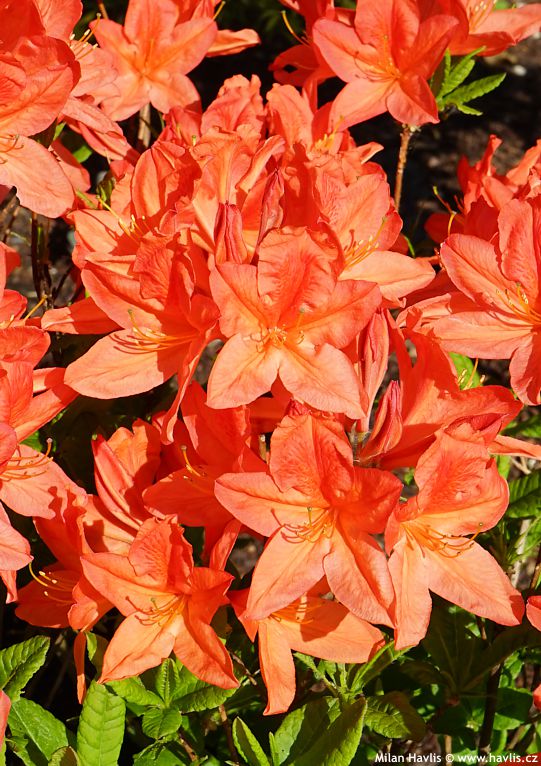
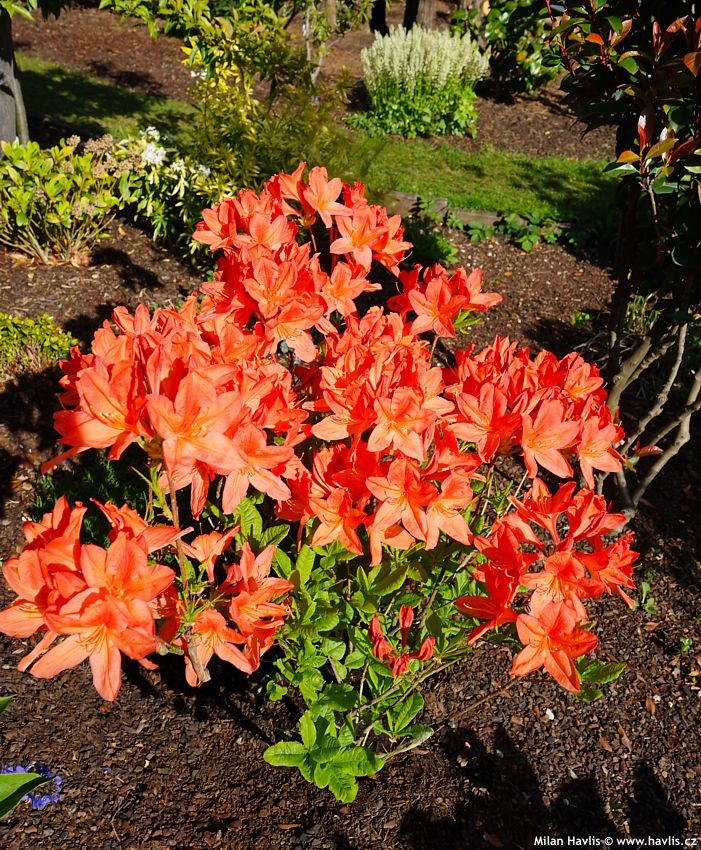
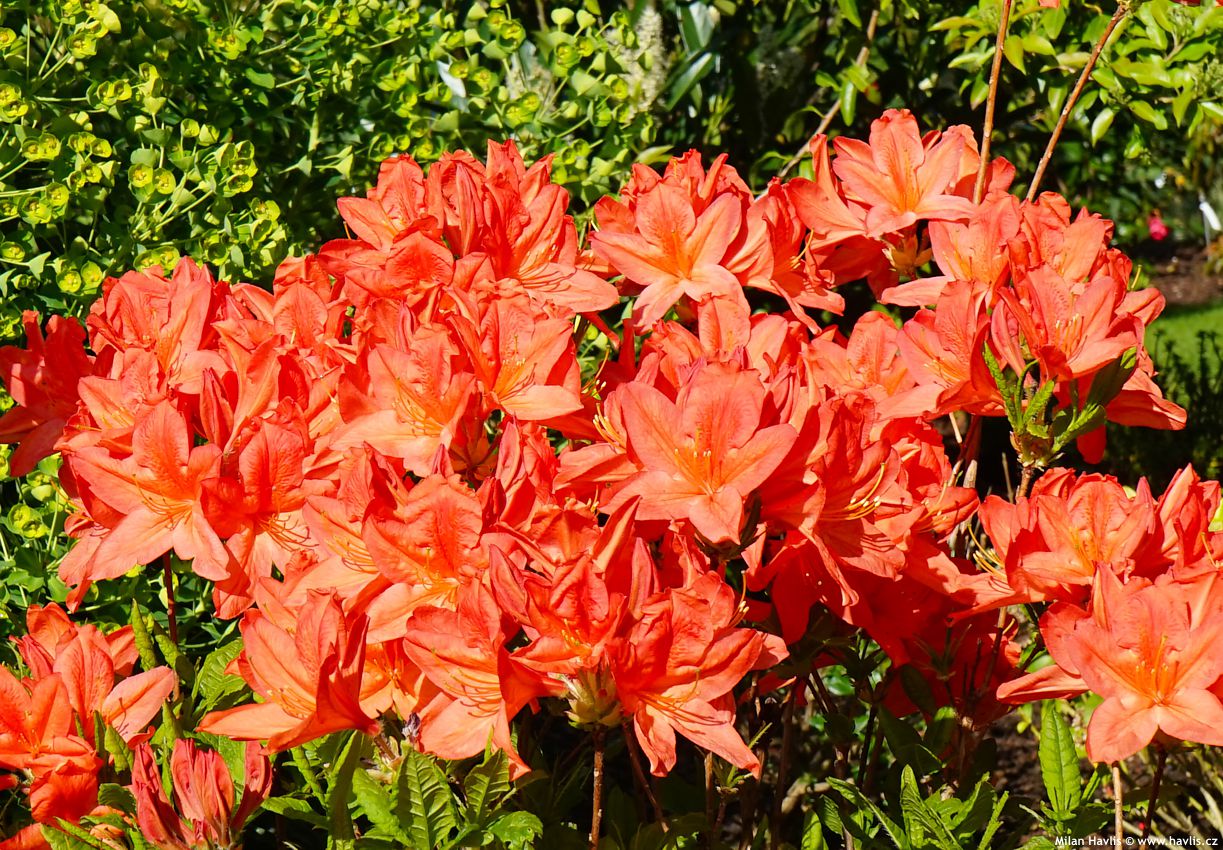
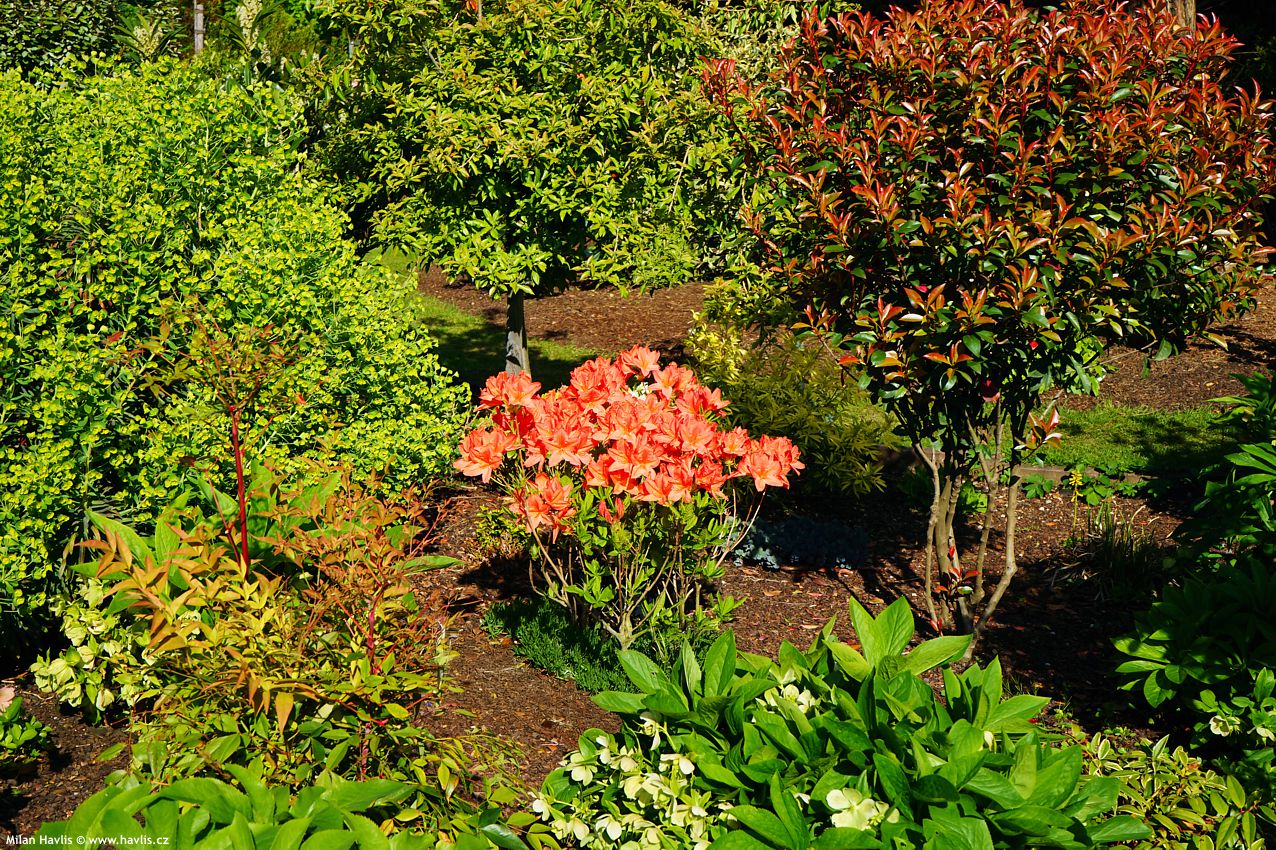
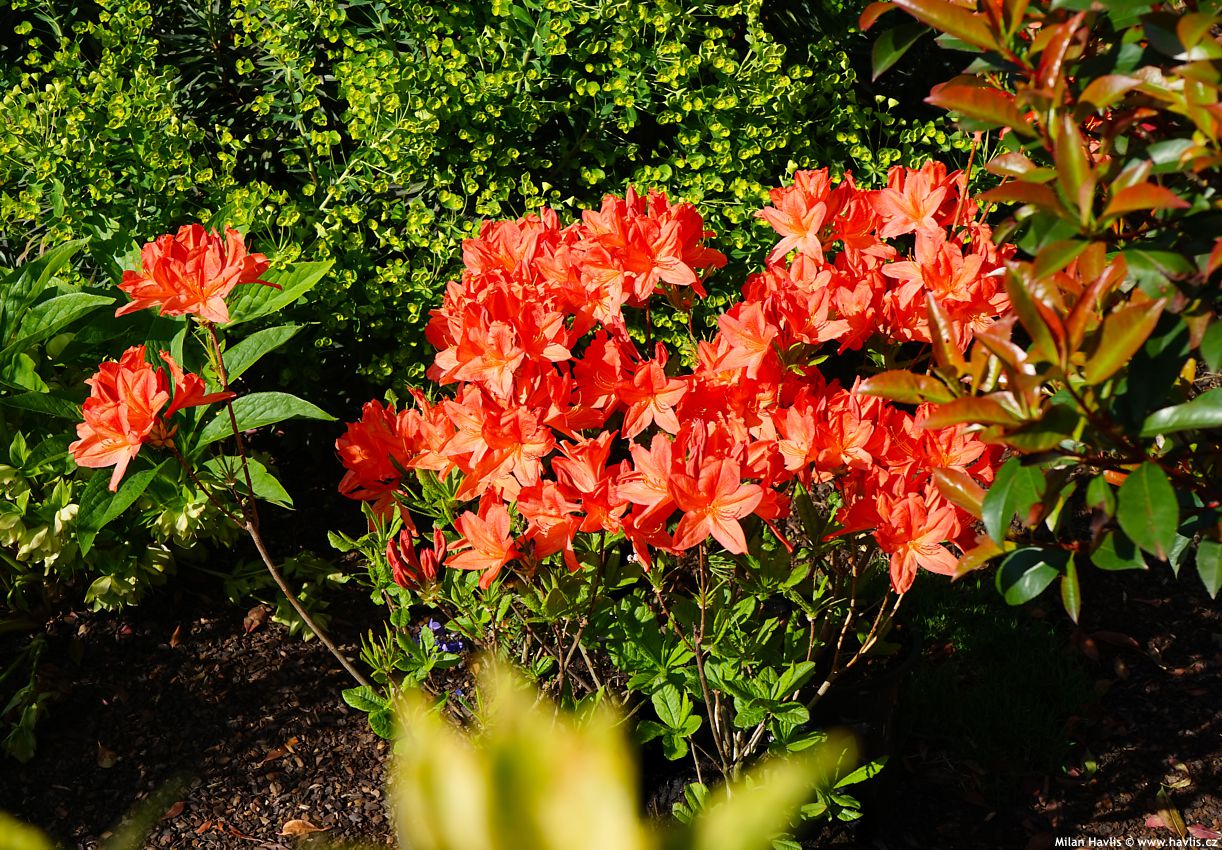
.jpg)

